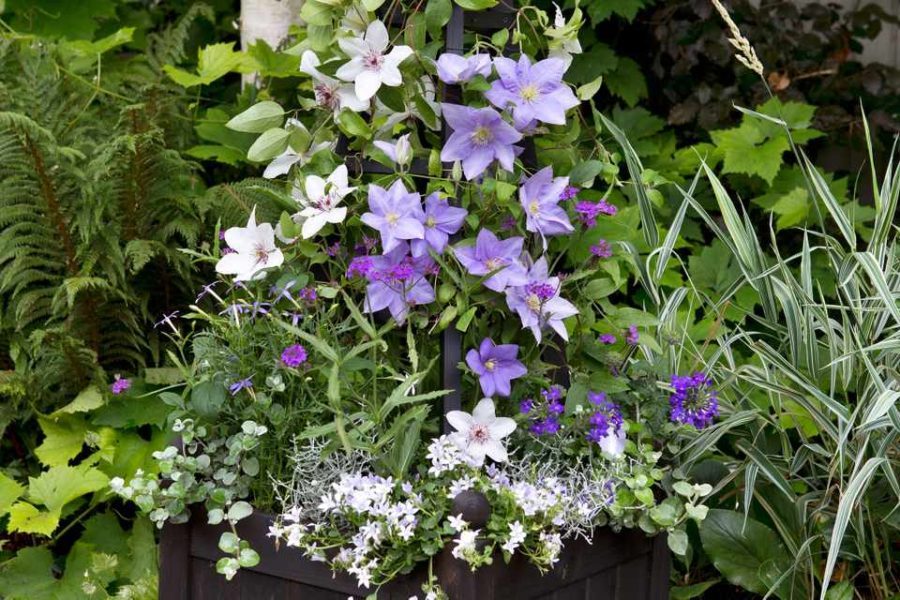General Information
- Category- Flower
- Binomial Name- Clematis occidentalis
- Common Names- Clematis
- Spread- 24 inches**
- Height- 40 inches**
- Average Production- 50-100 flowers per plant
- Days to Maturity- 365-700 days*
Environmental Requirements
- Soil- Well-drained soils, Slightly alkaline
- Soil pH- 5.5-7.0
- Soil Moisture- 20%
- Sun Requirements- Full Sun/Partial Sun
- Best Time to Plant- Spring or Fall (March, August)
- Temperature range- 15-32 Celsius
Tips to Grow Clematis
- Arrange good quality clematis cutting with rootball.
- All clematis varieties do well in moisture-retentive soil, so add a bucket of garden compost or well-rotted manure in the soil.
- Make a hole twice the size of root ball .Position your clematis in the hole so that the top of the rootball is level with the soil surface, or 2 inch below for large-flowered types (pruning group three).
- We can mulch around the plants for better growth. Cover the soil surface around the plant base with tiles or stones to keep the roots cool and moist, which can prevent the fungal disease clematis wilt.
- There are three main classes of clematis when it comes to pruning: Group 1, 2, and 3.
- Clematis Group One – no pruning required. Can be pruned to tidy them up which is carried out straight after flowering
- Clematis Group Two – some pruning required. Prune in February by removing dead, damaged and diseased growth. Trim other stems to just above the strongest and highest pair of buds
- Clematis Group Three – hard pruning required. Cut right back in spring before growth begins, pruning to just above a healthy bud, about 30 cm from the soil
** The values are standard values but might change a bit.
*To get flowers quickly, the users can buy plants from nursery.





Hi there colleagues, nice article and fastidious arguments commented
at this place, I am actually enjoying by these.